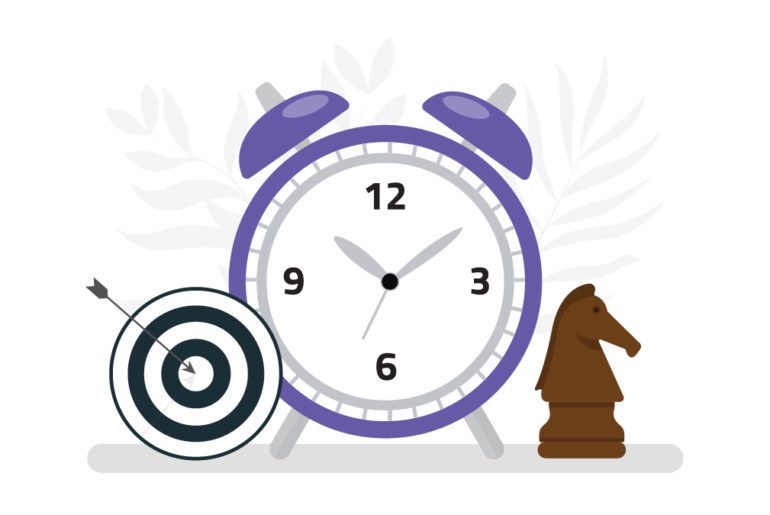Time is one commodity that we need for every task we perform. If we are swift with our time management we can pretty much complete every task we have while also being able to have a personal life of our own. To help you manage your time better here are some time management techniques that you can apply to your day-to-day life no matter what you do.
5 best time management techniques

Here are 5 tips for managing your time better without compromising on your personal life.
1. Use time management techniques of 4 quadrants by Covey
Stephen Covey, an American educator is popularly known for his four-quadrant theory on time management. In this theory, he proposed the division of one’s time and responsibilities in four categories of four quadrants as part of his time management techniques. Each of these quadrants is named Quadrant I, Quadrant II, Quadrant III, and Quadrant IV.
- Quadrant I contains tasks and responsibilities that are important and urgent for the person to do. This task cannot be postponed or delegated and need to be done at any cost.
- Quadrant II contains tasks that are important but not urgent. This might include long term goals or any actions that do not require immediate response.
- Quadrant III contains tasks that are very urgent but not important. These tasks are generally the ones that do not contribute to one’s productivity and instead impair one’s time management techniques since these are menial tasks that need to be done. These include tasks like email management which might not directly influence productivity but will help you in the long run.
- Quadrant IV includes activities which are neither important nor urgent. These tasks can be delegated or outright cancelled given they only waste your time without improving your productivity.
2. Eisenhower’s time management matrix
The famous US President Dwight D.Eisenhower was popular for his time management skills. The Eisenhower time management Matrix was made based on his tactics and is used for prioritizing tasks on the basis of urgency for better time management techniques. This matrix is divided into four quadrants, namely Do, Decide, Delegate and Eliminate.
- The Do quadrant consists of your most important and urgent tasks. These tasks are the ones whose deadlines are soon approaching or cannot be delayed for whatever reason. Thus these tasks feature the highest on your priority list.
- The Decide quadrant consists of tasks which are important but not entirely urgent. These tasks and responsibilities are the ones which contribute to your long term goals. You can schedule and handle these tasks in this category of time management techniques such that they do not enter the Do quadrant.
- The Delegate quadrant refers to tasks which are not important but urgent. These tasks do not directly contribute to your productivity but are important as they you do your menial tasks. You can postpone this task or even delegate as long as they are get complete eventually.
- The Eliminate quadrant are tasks that steal time away from your productivity. These include mindless surfing on the internet or getting busy with phone calls etc. One must avoid these tasks at all costs.
3. Applying the 4 quadrants of time management techniques in real life
Now that we know what the different types of quadrants for time management are, it is now time to know how to use them. Different people can use these time management techniques according to their needs.
- Keep them apart: Make separate matrices for your personal and professional lives. This makes it easier to prioritise your responsibilities better and keep your tasks separate.
- Set a limit: Even though one might find the day I have many tasks it is wiser to limit the number of responsibilities one has. Trying to add too many tasks to the quadrants might make you feel lost as you tick off your matrix.
- Focus better: You can also use this metric to understand what time management techniques are and what tasks you need to do on that day itself. Thus you know that you can postpone any tasks that are not urgent. And hence you can focus on the tasks at hand without feeling overwhelmed.
4. Committing to a schedule
Knowing what is time management is all about prioritising your tasks and responsibilities. You can only do this in due time by setting a schedule. You can also make this schedule using the above time management tools and matrices. Using the above time management techniques can help you set a proper schedule by setting correct priorities and allotting appropriate amounts of time to your tasks. Committing to a schedule also enables you to ignore tasks that might seem important but are actually not. Eliminating these tasks also helps you reduce anxiety and lets you focus on the tasks that matter.
Hone your time management skills
The above time management techniques might be difficult to use at first but with enough practice, they can seamlessly fit into your daily life. Also, check out our blog on time management apps to automate your tasks and help yourself in managing your time better.
FAQs
Time management is the practice of efficiently using time to achieve more goals in the most productive manner.
1. Good time management allows the students to complete assignments, projects on time.
2. It also enables students to plan ahead of time to ensure good quality of work.
3. With time efficiency, students also get time for their own self and personal growth.
1. Time management ensures higher productivity in the work place.
2. It also allows employees to produce good quality of work in a shorter span.
3. Personal and professional growth is ensured with good time management.
1. Set priorities first to ensure that all urgent tasks are taken care of.
2. Set goals and targets.
3. Set a time limit to all your tasks.
4. Organize your workplace.
5. Limit your distractions by turning your notifications off.




